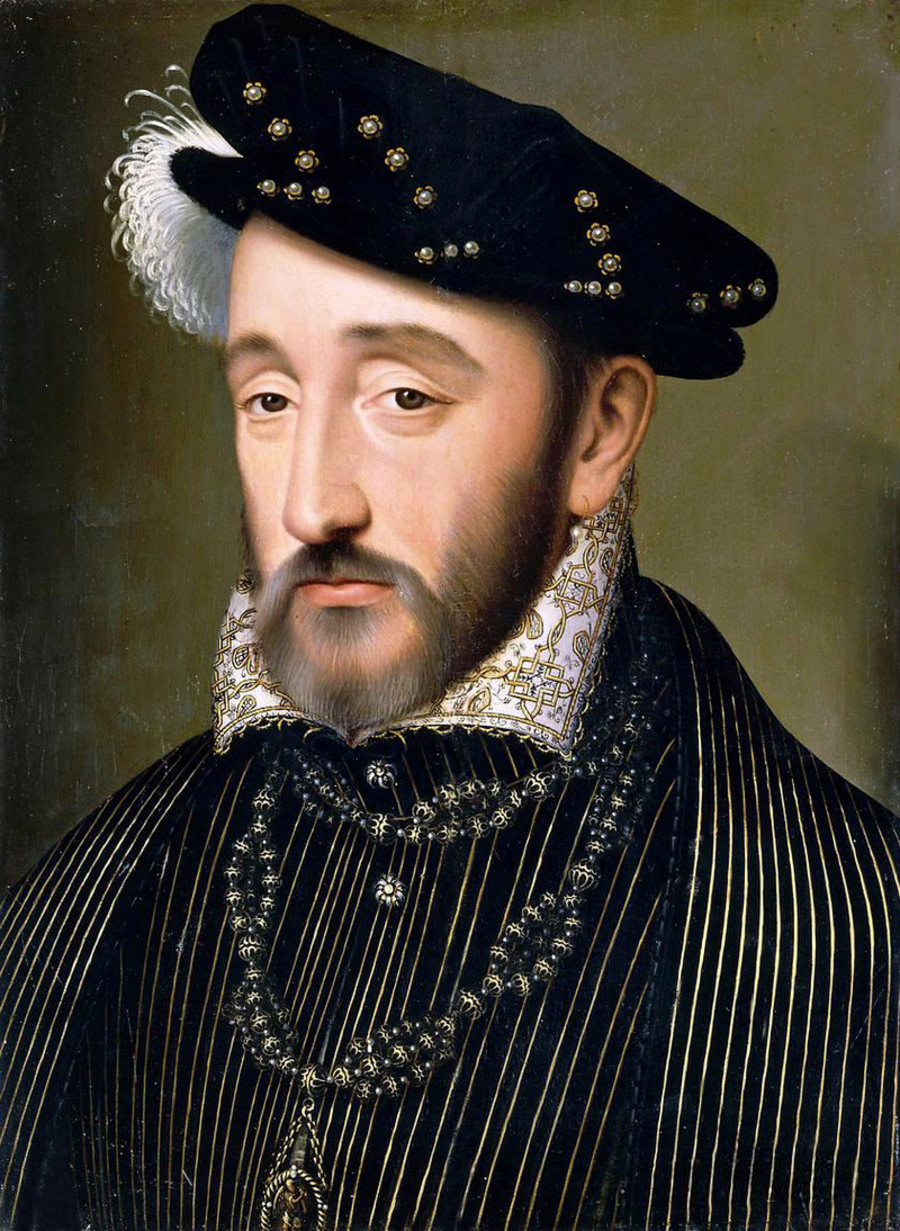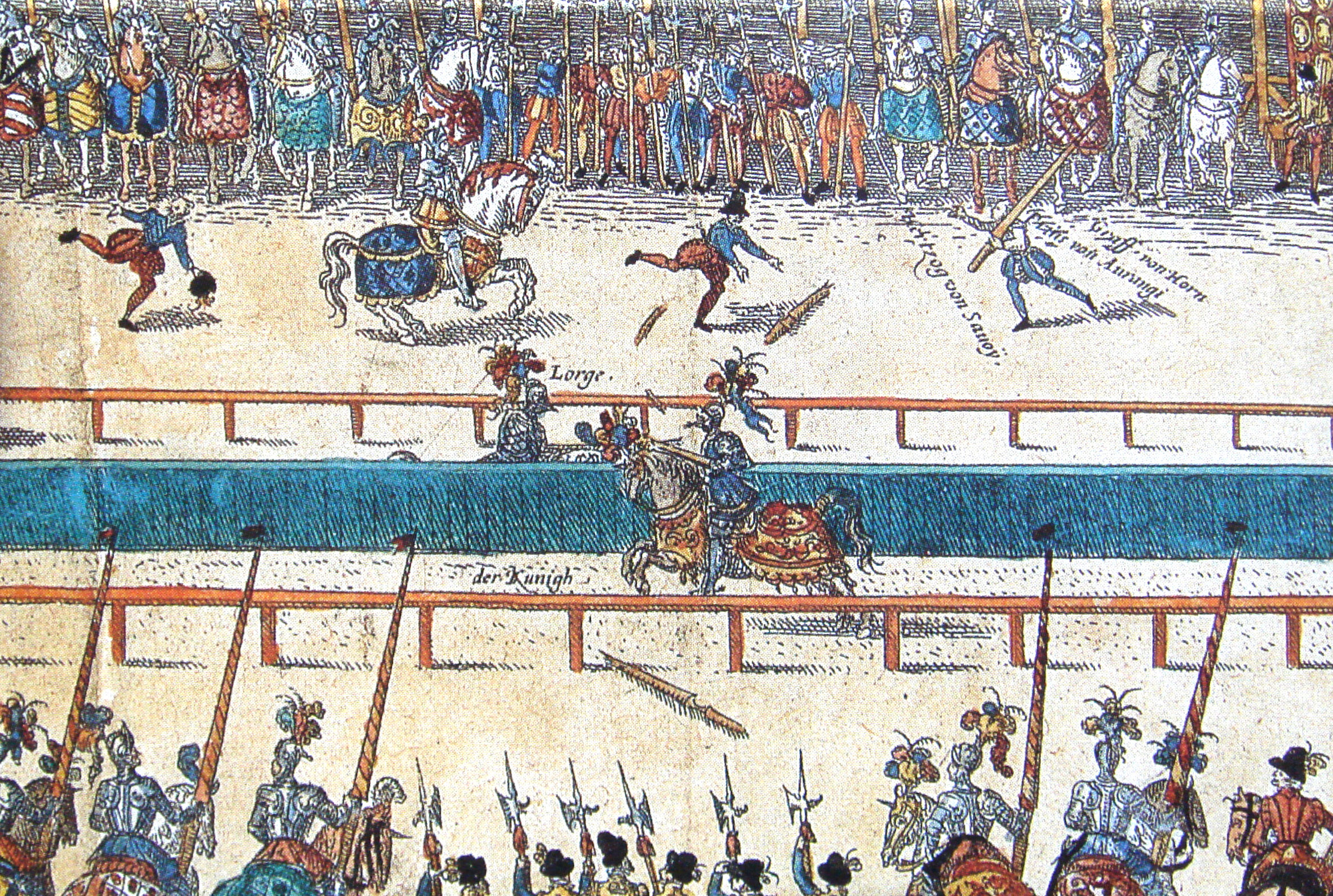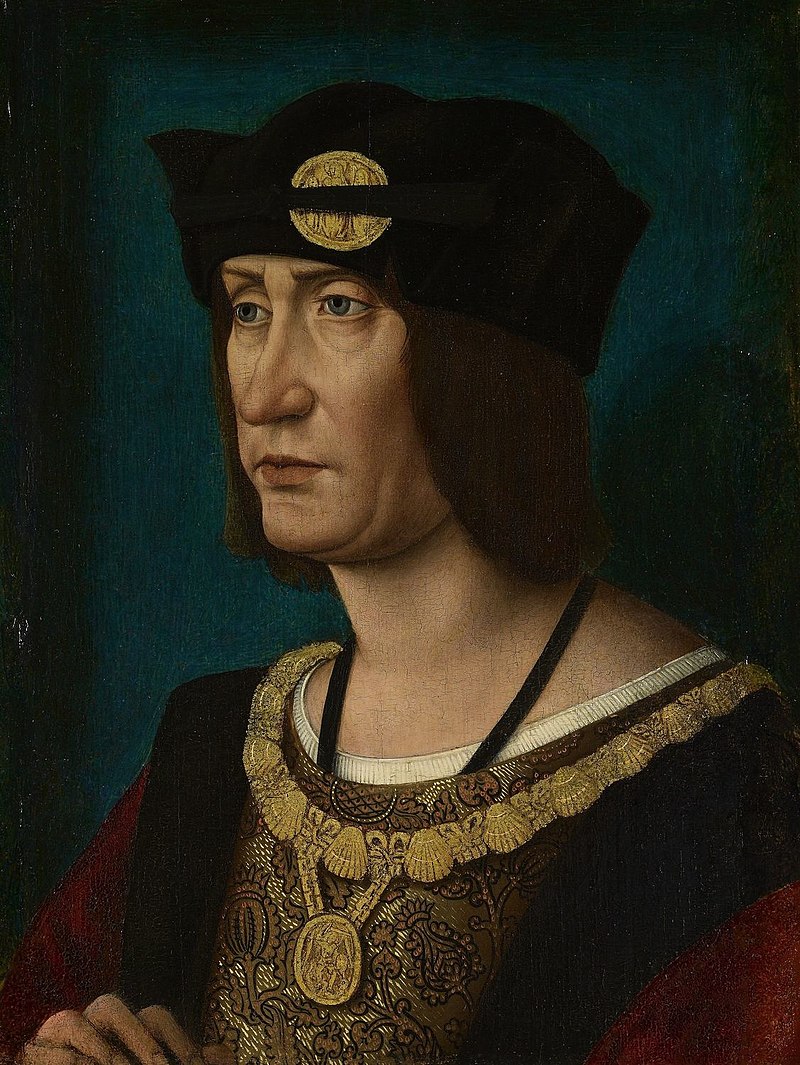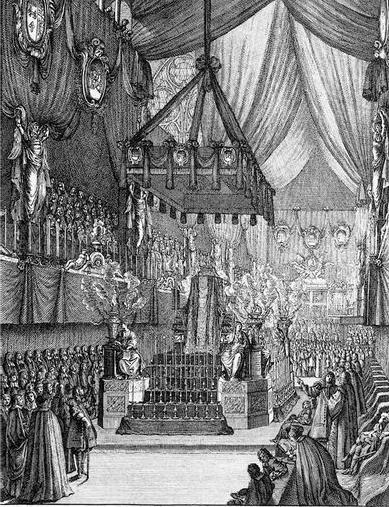by Susan Flantzer © Unofficial Royalty 2013

Madeleine of Valois, Queen of Scots; Credit – Wikipedia
Madeleine of Valois was born on August 10, 1520, at the Château de Saint-Germain-en-Laye in France. Her parents were King François I of France and Claude, Duchess of Brittany. King François I had inherited the throne from his cousin King Louis XII, who had no surviving sons despite three marriages (his last marriage was to Mary Tudor, the younger sister of King Henry VIII of England). King Louis XII had two surviving daughters, Claude and Renée, from his marriage to Anne, Duchess of Brittany. Because France followed the Salic Law which dictated that the crown should pass to and through the male line, Louis XII’s cousin François succeeded him as King of France. However, Brittany allowed the duchy to be passed to and through the female line, so when Anne, Duchess of Brittany died, the duchy passed to her elder daughter Claude. French nobles urged Claude’s father to marry her to his cousin François as he was French and the heir presumptive to the French throne. Shortly after she became Duchess of Brittany, thirteen-year-old Claude married François and in the following year (1515), Claude’s father died and her husband became King of France. Claude died in 1524 when she was 24 and her daughter Madeleine was only three years old. During her ten years of marriage, Claude was almost constantly pregnant, bearing King François I seven children, the siblings of Madeleine of Valois.
Madeleine’s siblings:
- Louise (1515 – 1517), died in childhood, engaged to King Carlos I of Spain (later also Charles V, Holy Roman Emperor)
- Charlotte (1516 – 1524), died in childhood from measles, engaged to King Carlos I of Spain (later also Charles V, Holy Roman Emperor)
- François III, Duke of Brittany (1518 – 1536), unmarried, succeeded his mother Claude as Duke of Brittany, died aged 18
- Henri II, King of France (1519 – 1559), married Catherine de’ Medici, had ten children, including three Kings of France: François II, Charles IX, and Henri III
- Charles II, Duke of Orléans (1522 – 1545), unmarried, died at age 23
- Margaret of France, Duchess of Berry (1523 – 1574), married Emmanuel Philibert, Duke of Savoy, had one son

Madeleine (back right) with her mother and sisters, from the Book of Hours of Catherine de’Medici; Credit – Wikipedia
After the death of her mother, Madeleine and her younger sister Margaret were raised by their paternal aunt Margaret of Navarre. In 1530, King François I married Eleanor of Austria, the sister of the powerful Holy Roman Emperor Charles V, and Madeleine and Margaret were then placed in their stepmother’s household. Madeleine, who was sickly since her birth, developed tuberculosis by the time she was sixteen.
After the Battle of Flodden in 1514, where King James IV of Scotland led an invading army into England, was defeated, and died in the battle, Scotland wanted to strengthen their alliance with France. The Treaty of Rouen was signed in 1517 and one of the provisions was for King James V of Scotland to marry a French princess. King James V was the son of King James IV of Scotland and Margaret Tudor, the daughter of King Henry VII of England and the sister of King Henry VIII of England. When King James V reached a marriageable age, talks began regarding a marriage with Madeleine. However, Madeleine had tuberculosis and her ill health was an issue and another French bride, Mary of Bourbon, was offered as a substitute. When James V came to France to meet Mary of Bourbon, he met Madeleine and decided to marry her. Because of his daughter’s health issues, François I was reluctant to agree to the marriage, but eventually, he did so. Madeleine and King James V of Scotland were married on January 1, 1537, at Notre Dame Cathedral in Paris.
After months of celebrations in France, the couple arrived in Scotland on May 19, 1537, but Madeleine’s health had further deteriorated. Madeleine wrote a letter to her father on June 8, 1537, saying that she was feeling better and that her symptoms had subsided. Despite this, on July 7, 1537, Madeleine died from tuberculosis in her husband’s arms, a month short of her seventeenth birthday. Less than a year later, still wanting a French bride, King James V of Scotland married Mary of Guise. The couple had three children, two sons who died in infancy, and a daughter Mary, Queen of Scots, who succeeded her father at the age of six days when he died five years into the marriage.
Madeleine was buried at Holyrood Abbey in Edinburgh, Scotland which now lies in ruins. A sign near tomb says: This simple vault was built after the eastern part of this Abbey Church was destroyed by the English army in 1544. Here were placed the coffins of James V, Madeleine his first Queen, and his infant sons by his second marriage to Mary of Guise. In 1688 the tomb was violated during the riots at the end of James VII’s reign and its contents were left in disorder. In 1898 Queen Victoria ordained a repair of the vault and the remains of those previously interred here were re-buried in one coffin. The vault also contains the coffin of Mary of Gueldres, Queen of James II, which was moved in 1848 from Trinity Church, Edinburgh.
This article is the intellectual property of Unofficial Royalty and is NOT TO BE COPIED, EDITED, OR POSTED IN ANY FORM ON ANOTHER WEBSITE under any circumstances. It is permissible to use a link that directs to Unofficial Royalty.
























